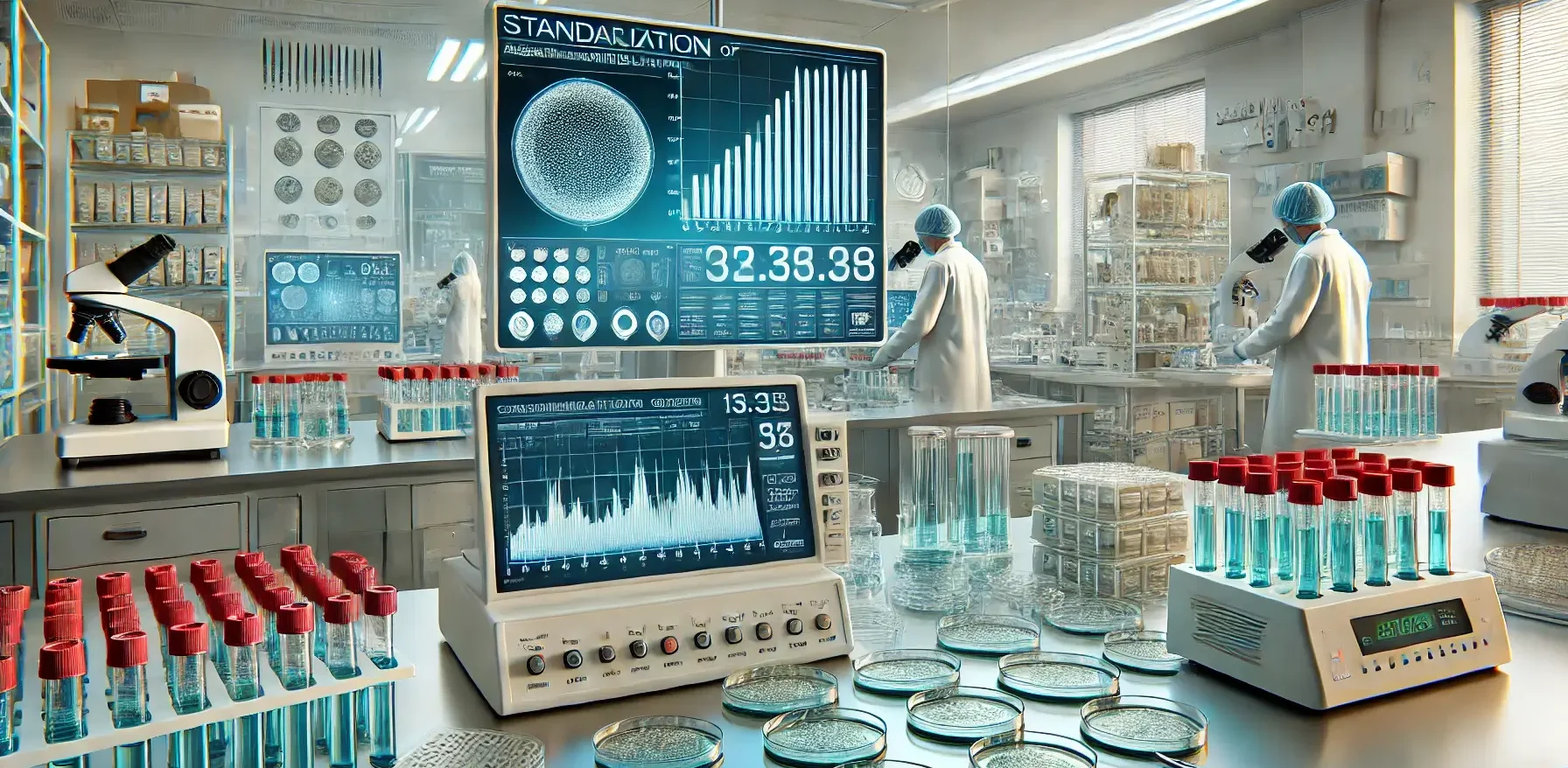- Standardization of antibiotics using microbiological assays involves determining the potency and efficacy of the antibiotics based on their ability to inhibit the growth of specific microorganisms.
- Here are the main methods used for microbiological assays in the standardization of antibiotics:

1. Agar Diffusion Assay (Kirby-Bauer Method)
-
Principle:
- Based on the diffusion of antibiotics through an agar medium, inhibiting the growth of a bacterial lawn.
-
Procedure:
- Preparation: Inoculate an agar plate with a standardized bacterial suspension.
- Application: Place antibiotic samples on paper discs or in wells on the agar surface.
- Incubation: Incubate the plates to allow bacterial growth and diffusion of the antibiotic.
- Measurement: Measure the diameter of the inhibition zones around the discs or wells.
- Comparison: Compare the inhibition zones to those produced by standard antibiotic concentrations to determine potency.
-
Applications:
- Commonly used for antibiotic potency testing and sensitivity testing.
2. Tube Dilution Assay of Standardization of Antibiotics
-
Principle:
- Determines the minimum inhibitory concentration (MIC) by diluting the antibiotic in a liquid growth medium.
-
Procedure:
- Preparation: Prepare a series of test tubes with decreasing concentrations of the antibiotic.
- Inoculation: Add a standardized bacterial suspension to each tube.
- Incubation: Incubate the tubes to allow bacterial growth.
- Measurement: Measure bacterial growth, typically by optical density (OD) at a specific wavelength or by visual inspection.
- Comparison: Compare the MIC to the MIC of a standard reference antibiotic to determine potency.
-
Applications:
- Used to determine the effective concentration of antibiotics and compare the potency of different batches.
3. Turbidimetric Assay of Standardization of Antibiotics
-
Principle:
- Measures the turbidity (cloudiness) of a culture medium as an indicator of microbial growth.
-
Procedure:
- Preparation: Inoculate a liquid medium with bacteria and add the antibiotic samples.
- Incubation: Incubate the mixture to allow microbial growth.
- Measurement: Measure the turbidity using a spectrophotometer at a specific wavelength.
- Comparison: Compare the growth inhibition caused by the test antibiotic to that of standard antibiotic solutions to determine potency.
-
Applications:
- Suitable for antibiotics that have a known effect on the growth rate of specific microorganisms.Top of Form
Click Here to Watch the Best Pharma Videos

